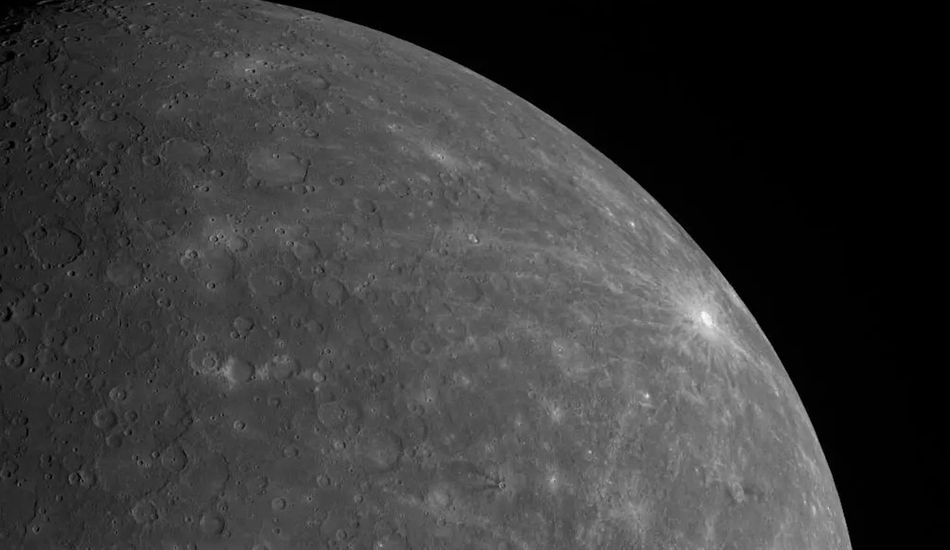
Solar Tides: How the Sun Sculpts Mercury's Wrinkled Landscape
Mercury, the solar system's smallest planet and closest to the Sun, endures a harsh existence. Consequently, its surface is crisscrossed with cracks and fractures, resulting from immense pressures on its crust. But how did these distinctive scars form on Mercury's surface? For quite some time, the source of these formations has remained a fascinating mystery for scientists.
While planets typically cool and contract after their formation, Mercury exhibits not only shrinkage but also lateral surface shifts and fractures in its rocky crust. It was originally assumed that this process was solely due to the planet's cooling. However, a recent study suggests that Mercury's close proximity to the Sun could play a crucial role.
A team of researchers from the University of Bern employed physical models to assess the impact of the Sun's tidal forces on Mercury. They discovered that our star might have significantly influenced the planet's tectonic features over extended periods. The study's findings reveal that Mercury's unique orbit, completing one revolution around the Sun in 88 Earth days while rotating three times every two orbits, is key. Its elliptical path and 7-degree tilt relative to Earth's orbital plane cause substantial variations in the tidal forces it experiences from the Sun.
Liliane Burkhard, lead author of the study, explained that these orbital characteristics create tidal stresses. That leave a mark on the planet’s surface. “We can see tectonic patterns on Mercury that suggest more is going on than just global cooling and contraction.”
Unraveling Mercury's Tectonic Puzzle
To understand how these tidal forces contribute to shaping Mercury's crust, the research team used physical models spanning four billion years to calculate the Sun's influence on surface tensions. The results indicated that the Sun's changing gravitational pull has indeed affected Mercury's tectonic features over time.
Although tidal stresses were once considered insignificant, Burkhard emphasized that the direction of these stresses aligns with observed fault-slip patterns on Mercury's surface.
Moreover, these findings are applicable to other planets, highlighting how subtle forces can leave lasting marks on a planet's surface. Understanding how a planet like Mercury deforms provides insights into the evolution of planetary bodies over billions of years.
Looking ahead, scientists aim to gather more insights into Mercury's deformed surface through the BepiColombo mission. Launched in 2018 as a joint effort between the European Space Agency (ESA) and the Japan Aerospace Exploration Agency (JAXA), BepiColombo is only the third spacecraft to visit Mercury, due to the challenges posed by the Sun's gravitational pull.
Source: Gizmodo